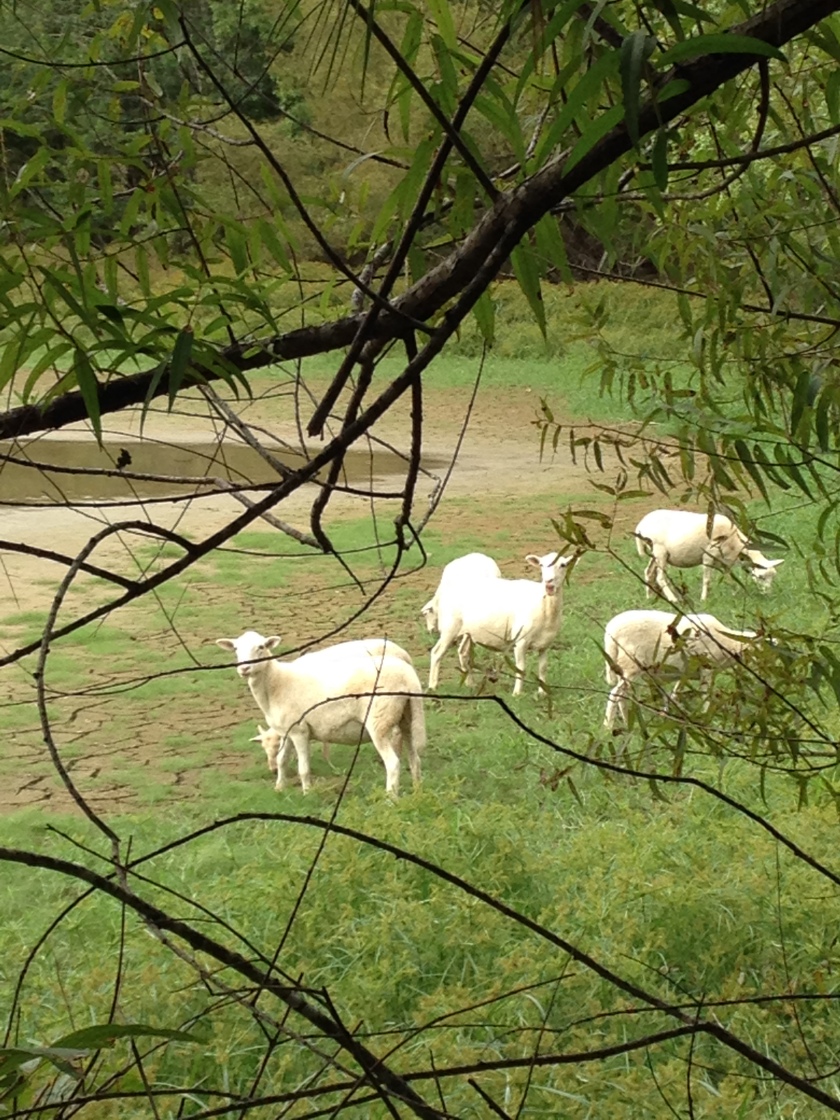The U.S. Deep South is known for heat, humidity, and the occasional hurricane. But two years ago, we were in the midst of a drought. If we weren’t exactly hoping for a hurricane, we would have welcomed a tropical storm.
It was early fall, and after weeks of little to no rain, the oak trees wilted. The leaves faded to a greenish-beige, like day-old avocado flesh.
The soil turned sandy in some places and hard as terra cotta in others. The pastures were parched, and what grass was left was brown and crunchy underfoot.
After several more weeks of dry weather, our lake receded. The water retreated from the maple trees lining the shore, revealing more and more of the lake floor. Bream, bass and mud turtles crammed into an ever-shrinking stagnant pool. The ground cracked into muddy puzzle pieces that didn’t quite fit together.

It was about this time that our twenty-odd Katahdin sheep broke through the fence, wandered into the yard, and ate my potted red geraniums — retaliation for confining them to their pasture.
Over the next few days, we got into a pattern: they would escape through the fence, my husband and I would lure them back with a bucket of sweet corn. Again and again.
Giving In
Eventually, they wore us down; we knew we were beat. They needed more vegetation than their small pasture could provide, so we closed our front gate and let them roam over the whole fifty acres. And though I resented the loss of my flowers and the pebble-size droppings sprinkled over the yard (walking was tricky), the sheep were quite happy with this arrangement.
They ranged far into the woods during the day, and at night, they’d camp in the front yard close to the house. We’d peer out our bedroom window and watch them, frozen in place, sleeping on their feet. Or more eerie still, the ghostly figures would drift across the lawn in the darkness, their emerald eyes glowing.
The Wasteland
As the drought persisted, I’d walk past the dying lake on my way to the mailbox and bemoan the water loss.
I missed the reflection of the trees and clouds on the mirrored surface. I missed the gray heron and the snowy egrets fishing in the shallows. The not-so-attractive Muscovy ducks and loons. They’d all left for deeper waters.
The lake bottom was an ugly wasteland that smelled of rot.
But sometimes the death of one thing gives life to another. And just when you’ve filled your empty cup with cynicism, a dry lakebed surprises you.
Hope Springs
At first, the dirt took on a mossy hue. Then vegetation sprouted from the mud which, over the next few days, grew tall and thick.
Glossy, lush grass. The flock feasted on it, spending long days in the lakebed, until their bellies grew big and round and they were satisfied.

When winter came, the rains returned and replenished the lake. The drought ended, but so did our days as sheep farmers. After years of battling predators, especially coyotes, we were losing the war.
Quite unexpectedly but providentially, an elderly man in overalls knocked on our door one afternoon. He’d seen the sheep from the highway and wondered if we would sell them.
Yes, we said reluctantly.
This Baptist preacher said he knew a lot about raising sheep. I suspect he knew something about shepherding humans, too. In the end, no money changed hands. We gave them away.
He called not too long ago. “I didn’t want you to worry,” he said. “The sheep are thriving.”
As sad as I was to give them up, his call reassured me. They’re in a better place now. A safer place, with a good shepherd, lots of fresh grass and, hopefully, a lake of their own.

